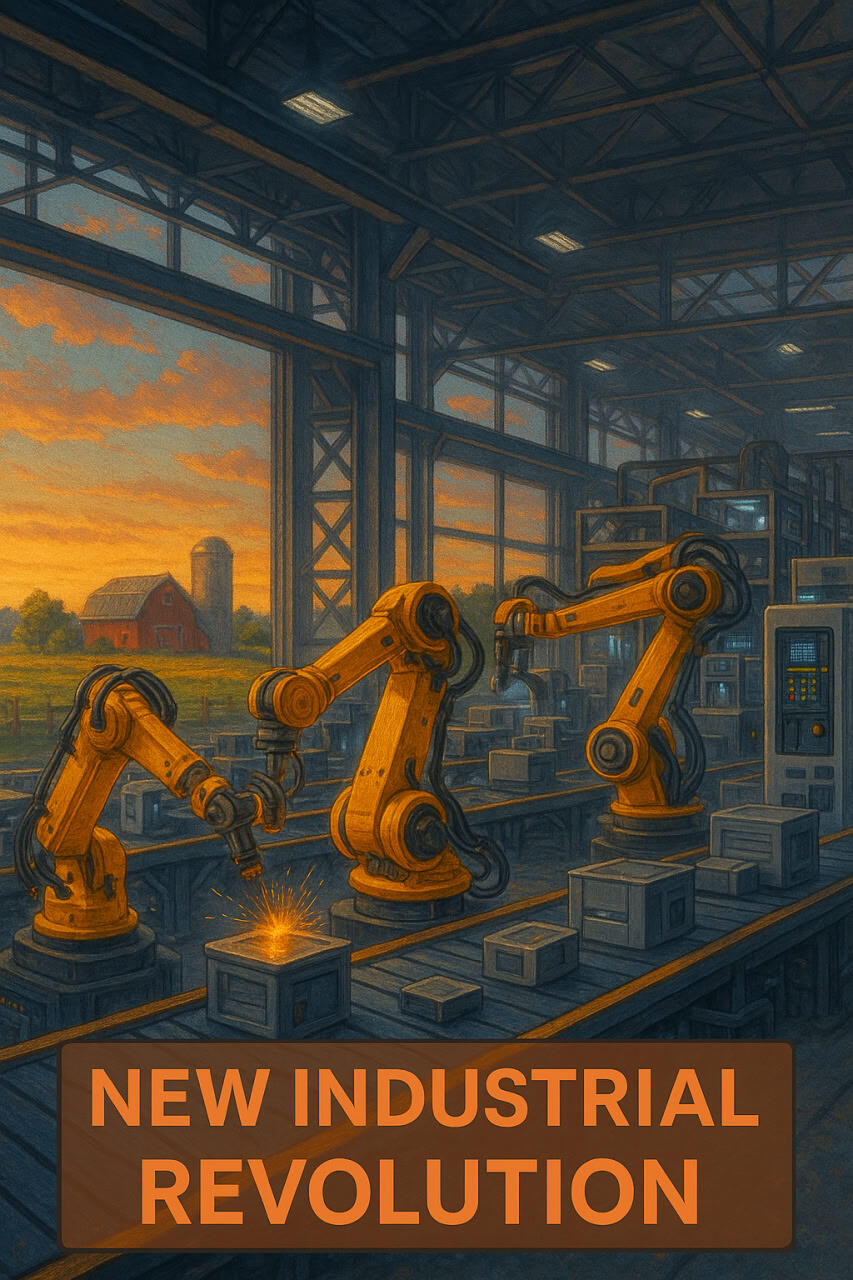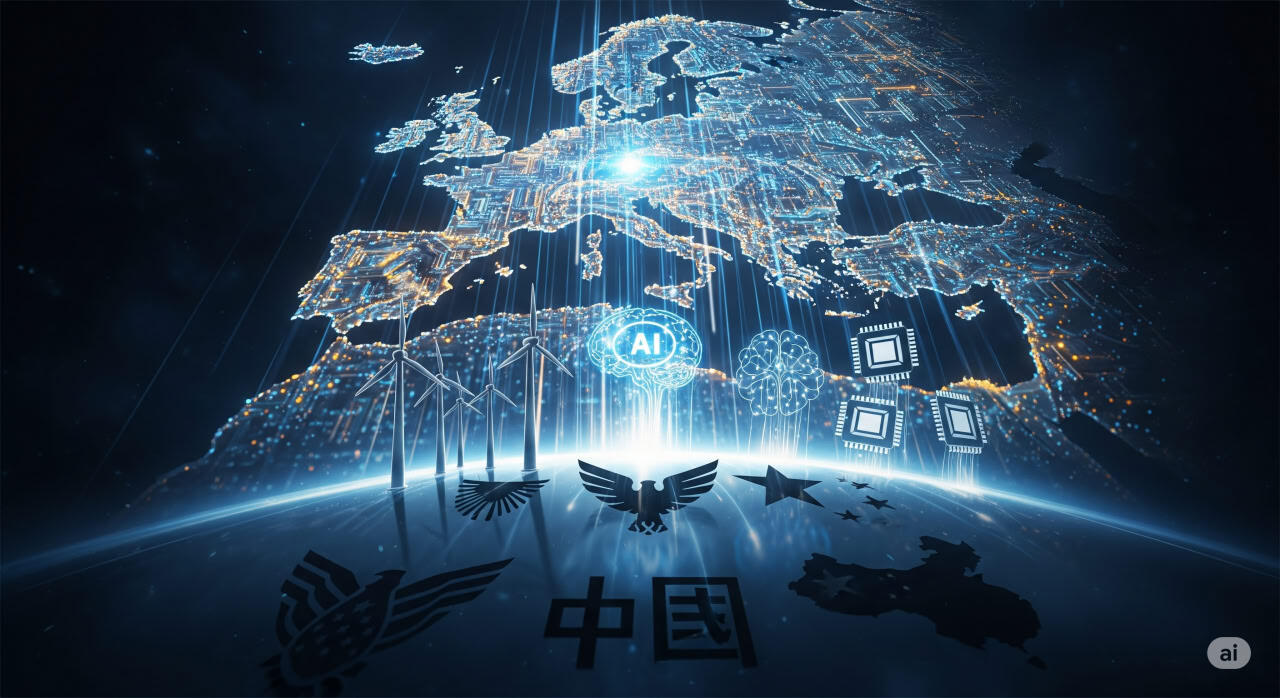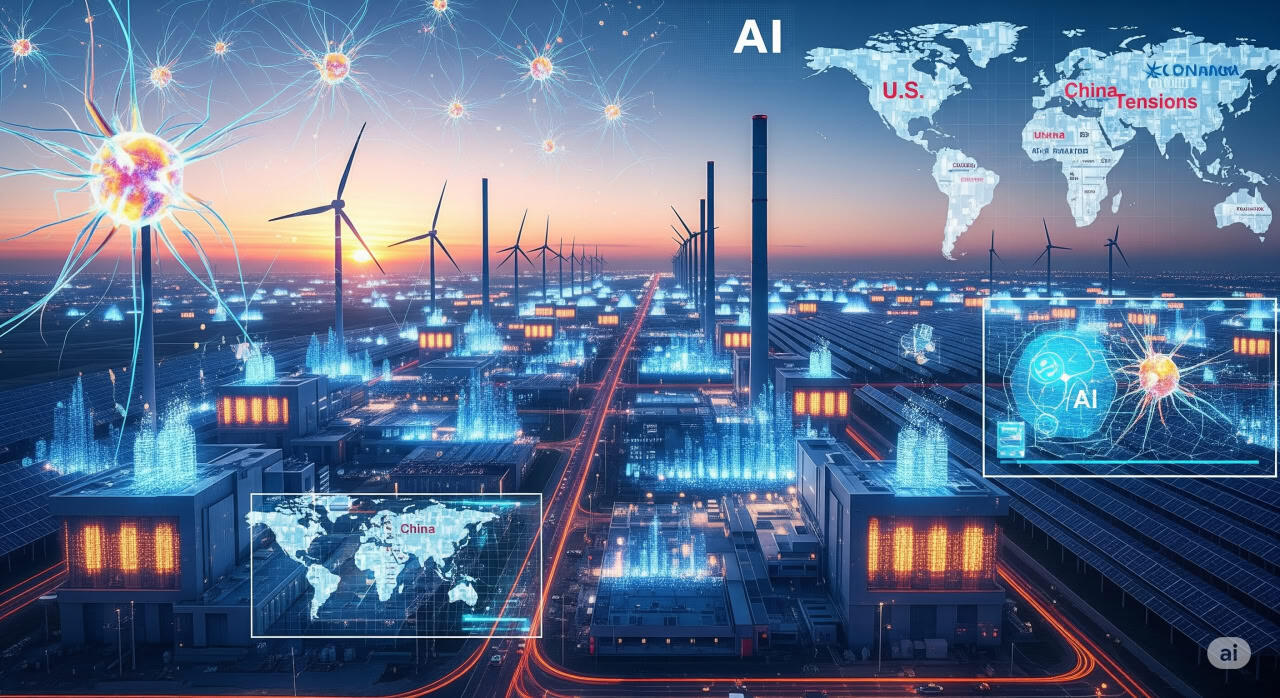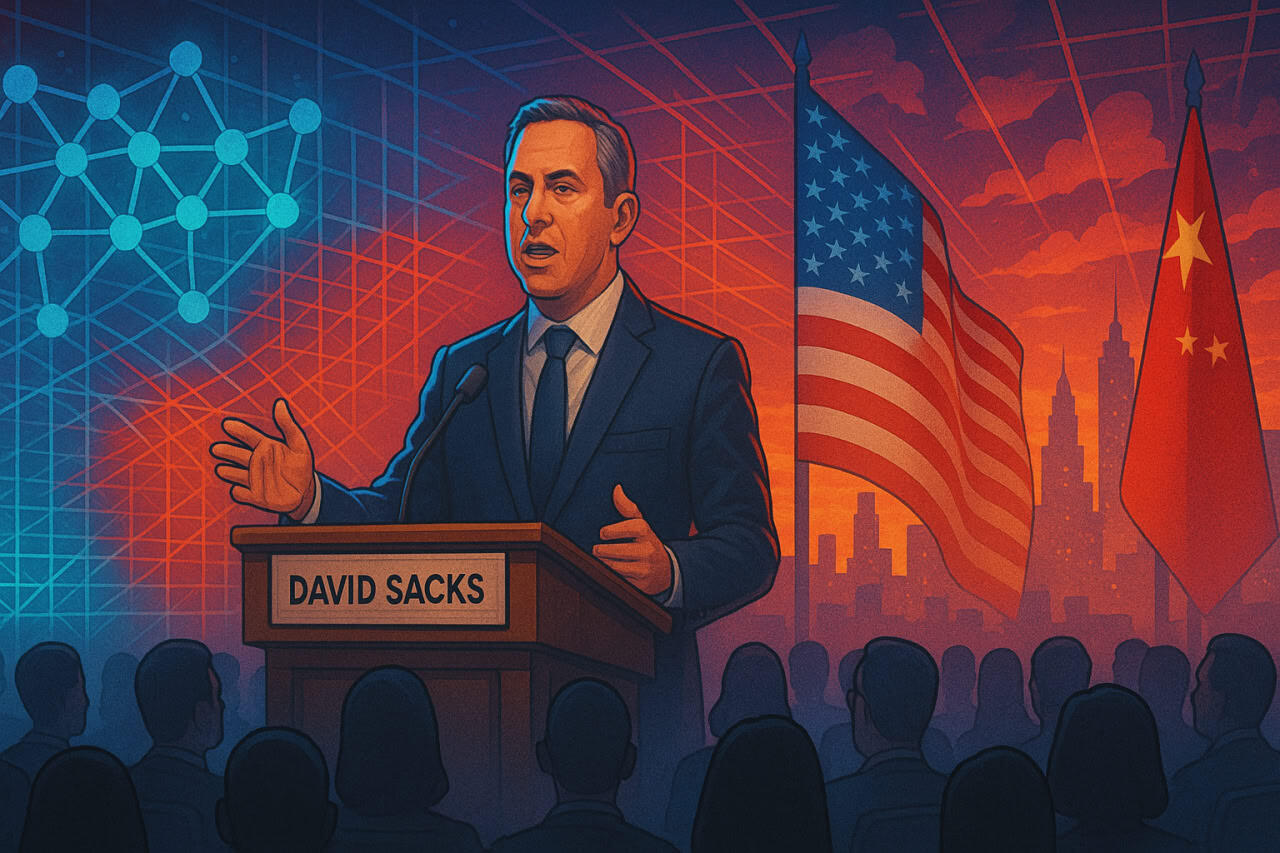The AI Revolution: Will America Seize Its Industrial Destiny or Lose to China?

How Marc Andreessen Envisions a New Industrial Revolution to Bridge the Urban-Rural Divide
Introduction: A Turning Point for America’s Future
Imagine a world where robots aren’t just science fiction but the backbone of a revitalized American economy. Picture factories humming with cutting-edge automation, rural communities buzzing with new opportunities, and a nation reclaiming its industrial might in a way that lifts everyone up. This isn’t a Hollywood blockbuster—it’s the vision Marc Andreessen, tech titan and venture capitalist, laid out in a recent conversation at the Ronald Reagan Presidential Library Economic Forum. His message? The rise of artificial intelligence (AI) and robotics could spark a new industrial revolution, but only if America makes bold, deliberate choices.
Andreessen’s words hit like a thunderbolt. At a time when the U.S. grapples with economic stagnation, a growing urban-rural divide, and fierce global competition—particularly from China—he argues that AI isn’t just a tech trend; it’s a geopolitical and economic imperative. But here’s the catch: will we seize this moment, or let fear and bad policy hold us back? This article dives into Andreessen’s insights, weaving in historical context, geopolitical stakes, and a human perspective on what’s at stake. Let’s explore how AI and robotics could reshape America’s future—and why the choices we make now will echo for generations.
The American System: A Historical Blueprint for Industrial Power
To understand Andreessen’s vision, we need to rewind to the 19th century, when America was a scrappy upstart facing the British Empire’s industrial juggernaut. Enter Alexander Hamilton, the nation’s first Treasury Secretary, who championed what became known as the “American System.” This wasn’t just a catchy slogan—it was a bold strategy to transform a largely agrarian U.S. into an industrial powerhouse. Hamilton’s playbook? Protect nascent industries with tariffs, invest in infrastructure, and foster a manufacturing ecosystem that could rival Britain’s.
Fast-forward to the late 19th century, and President William McKinley became the torchbearer of this vision during the Second Industrial Revolution (roughly 1870–1930). This era birthed the modern world—think automobiles, electricity, and mass production. America didn’t just catch up; it surged ahead, becoming the world’s industrial leader by the early 20th century. McKinley’s policies, initially protectionist, later embraced “reciprocity”—using tariffs as leverage to open global markets for American goods. The result? A thriving ecosystem of factories, suppliers, and innovation that powered the U.S. through two world wars and cemented its role as the “arsenal of democracy.”
Andreessen sees parallels today. He argues that the U.S. faces a similar choice: lean into a new industrial revolution driven by AI and robotics, or risk ceding ground to competitors like China, which has been running a modern version of the American System. But here’s where it gets tricky—unlike the 19th century, when leaders were laser-focused on industrial dominance, today’s America seems ambivalent. Are we ready to commit to a bold vision, or will we let indecision and outdated policies hold us back?
The De-Industrialization Dilemma: How We Got Here
For much of the 20th century, America’s economic engine roared. From 1870 to 1920, the U.S. saw explosive growth—three times the rate we have today—fueled by high immigration, protective tariffs, and rapid industrialization. Even from 1920 to 1970, the economy grew at twice today’s pace, driven by innovations like electronics and the space race. But something shifted in the early 1970s, around the time Andreessen was born. The U.S. economy “downshifted,” as he puts it, into a low-growth era.
What happened? Policy choices, plain and simple. The U.S. pivoted from manufacturing to a services-based economy, emphasizing knowledge work and financialization. This wasn’t an accident—it was deliberate. Regulations piled up, making industrial activity harder or outright illegal in some cases. Andreessen points to President Nixon’s creation of the Environmental Protection Agency (EPA) and the Nuclear Regulatory Commission as examples. While well-intentioned, these agencies stalled ambitious projects like Nixon’s “Project Independence,” which aimed to build 1,000 nuclear power plants by 2000. The result? No new plants, a missed opportunity for energy independence, and a slower-growing economy.
This shift had profound consequences. Knowledge work thrived in places like Silicon Valley and Austin, creating wealth for tech hubs. But rural America? Left behind. Factories closed, jobs vanished, and entire communities hollowed out. Andreessen, who grew up in rural Wisconsin before moving to California, saw this firsthand. He recalls the shock of realizing that coastal elites often “despise” rural Americans—a cultural and economic disconnect that fuels today’s populism. Slow growth, he argues, breeds a zero-sum mindset, where people fight over scraps instead of building a bigger pie. Sound familiar? It’s the root of much of our political polarization today.
The Urban-Rural Divide: A Tale of Two Americas
Perhaps the most striking part of Andreessen’s talk is his diagnosis of the urban-rural divide. Cities like San Francisco, New York, and Seattle have become magnets for wealth, drawing in highly educated elites and low-wage service workers. The middle class? Squeezed out. In the Bay Area, a cop or firefighter commutes three hours each way to afford a home. Families can’t afford kids in these cities—hence the abundance of dogs and the scarcity of strollers. Meanwhile, rural areas, stripped of industry, offer little economic opportunity.
Andreessen cites French geographer Christophe Guilluy’s book Twilight of the Elites to explain this. In an agricultural or manufacturing economy, economic activity spreads out because resources like land, energy, and infrastructure matter. But in a knowledge-based economy, wealth concentrates in cities, where software developers and executives cluster. This creates a two-tier system: the affluent elite in $3 million homes and low-income workers in public housing. Everyone else is pushed to the exurbs or beyond, where jobs are scarce.
Politically, this creates a toxic dynamic. Cities, dominated by progressive elites and their “clientele underclass,” as Andreessen puts it, often pursue policies that alienate the middle class. He points to absurdities like a New York mayoral candidate advocating city-owned grocery stores (hello, 21st-century breadlines) or a Seattle councilwoman pushing to nationalize Microsoft and Amazon. These policies, he argues, reflect a disconnect from the needs of ordinary Americans. Is it any wonder rural voters feel ignored—or worse, despised?
AI and Robotics: The Next Industrial Revolution
Here’s where Andreessen’s optimism shines. He believes AI, particularly when paired with robotics, could spark a new industrial revolution—one that revitalizes rural America and drives unprecedented growth. The U.S. is already the global leader in AI, with companies like OpenAI and xAI pushing the boundaries. But there’s a catch: AI today is mostly software, creating wealth for urban tech hubs but doing little for the heartland. The real game-changer, Andreessen argues, is “embodied AI”—robots that bring intelligence to the physical world.
Think self-driving cars, autonomous drones, or Elon Musk’s Optimus robot. These aren’t just gadgets; they’re the foundation of what Andreessen predicts will be the biggest industry in history. Billions of robots, from humanoid assistants to industrial machines, will need to be designed, built, and maintained. This isn’t about bringing back old factory jobs where workers screw bolts by hand—it’s about creating high-tech “alien dreadnought factories” (a term borrowed from Musk) that produce sophisticated hardware at scale.
This vision has massive implications. First, it could re-industrialize America, creating millions of jobs in manufacturing, engineering, and logistics—jobs that can thrive in rural areas, not just coastal cities. Second, it’s a national security imperative. If the U.S. doesn’t lead in robotics, Andreessen warns, we’ll live in a world of “Chinese robots everywhere.” Given China’s aggressive push to dominate AI and manufacturing, that’s not a hypothetical—it’s a real risk.
But here’s the human side: people are scared. Many fear AI will destroy jobs, not create them. Andreessen dismisses the “neo-Luddites” who predict doom, pointing out that the last 50 years have been marked by slow productivity growth, not rapid disruption. AI, he argues, will boost productivity, lower costs, and create more opportunities than it displaces. Imagine healthcare costs dropping to a fraction of today’s levels, or housing becoming affordable again. The catch? We need policies that embrace innovation, not stifle it.
The Policy Choices: Seizing the Opportunity
Andreessen is clear: this future isn’t inevitable. It hinges on policy choices. He points to several bottlenecks that must be addressed:
- Energy: Cheap, abundant energy is the backbone of an AI-driven economy. Nuclear power, as Nixon envisioned, could have transformed the U.S. Instead, regulatory hurdles killed it. Today, leaders like the Secretary of Energy are pushing for progress on nuclear, rare earth metals, and other resources. Will we finally get it right?
- Regulation: The U.S. regulatory state is a beast. From zoning laws that block new housing to healthcare cartels that stifle competition, red tape chokes innovation. Andreessen cites LASIK eye surgery as a rare success story—prices have plummeted while quality soars because it’s outside the regulatory stranglehold. Can we replicate this in other sectors?
- Immigration: This is a thorny issue. Andreessen acknowledges the value of high-skilled immigrants—his firm’s portfolio is a “United Nations” of talent. But he questions the need for mass low-skilled immigration in an era of AI and robotics. More controversially, he critiques how diversity, equity, and inclusion (DEI) policies and high-skilled immigration have squeezed out domestic talent, particularly from rural and middle-class backgrounds. Is there a way to balance global talent with opportunities for Americans?
- Education and Housing: Skyrocketing costs in these sectors are crushing the American Dream. Technology could drive prices down, but entrenched interests—university cartels, healthcare lobbies, and zoning boards—stand in the way. Andreessen argues that voters must demand change. Will they?
These aren’t abstract debates. They’re about whether a family in Ohio can afford a home, whether a kid in Wisconsin can get a fair shot at a top university, or whether a small town can host a factory building the robots of tomorrow. The stakes couldn’t be higher.
The Geopolitical Stakes: America vs. China
Zoom out, and the picture gets even more urgent. Andreessen frames AI and robotics as a two-horse race: the U.S. versus China. While Europe has “regulated itself to death,” China is aggressively pursuing industrial dominance, using a playbook straight out of America’s 19th-century playbook. Tariffs, subsidies, and state-backed investment have turned China into a manufacturing powerhouse. If the U.S. doesn’t step up, we risk a world where Chinese technology sets the standard—a scenario with profound economic and security implications.
This isn’t just about jobs. It’s about who controls the future. AI and robotics will shape everything from defense to supply chains. A world of “Chinese robots everywhere” isn’t just an economic loss; it’s a strategic one. Andreessen’s call to action is clear: the U.S. must lead, and that means embracing bold policies, from deregulation to strategic investments in energy and chips.
The Human Angle: Bridging the Divide
What makes Andreessen’s vision compelling isn’t just the tech—it’s the human element. He grew up in rural Wisconsin, far from the glitz of Silicon Valley. He knows what it feels like to be looked down on by coastal elites. His frustration with the urban-rural divide isn’t academic; it’s personal. And he’s not alone. Millions of Americans feel ignored, their communities left to wither while cities hoard wealth.
The promise of AI and robotics isn’t just economic growth—it’s a chance to heal this divide. By bringing high-tech manufacturing to rural areas, we could create jobs that don’t require a $3 million home in San Francisco. By slashing costs in healthcare, housing, and education, we could make the American Dream accessible again. But it won’t happen by accident. It requires leaders, voters, and innovators to reject the status quo and fight for a future that works for everyone.
Conclusion: A Choice to Build the Future
Marc Andreessen’s vision is both a warning and a call to action. America stands at a crossroads, much like it did in Hamilton’s and McKinley’s time. We can embrace AI and robotics, re-industrialize our heartland, and lead the world into a new era of prosperity. Or we can let fear, regulation, and indecision hand the future to our competitors. The choice is ours.
What’s inspiring is the potential. Imagine a country where rural towns thrive with high-tech factories, where healthcare and housing are affordable, and where every kid has a shot at a great education. It’s not a pipe dream—it’s within reach if we make the right moves. But it starts with us, the voters, demanding policies that prioritize growth, innovation, and opportunity for all.
So, what will it be? A nation that builds, or one that stagnates? Andreessen’s bet is on the former—and I’m inclined to agree. Let’s hope our leaders, and our people, are ready to prove him right.



